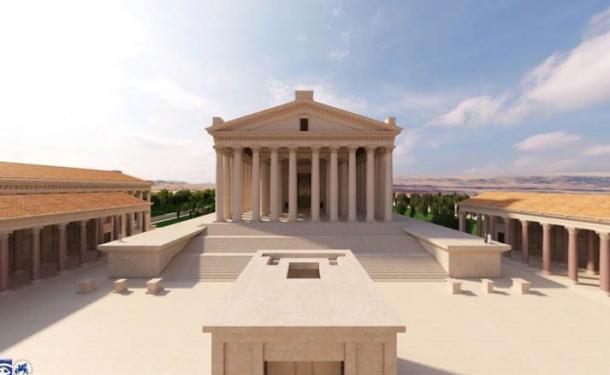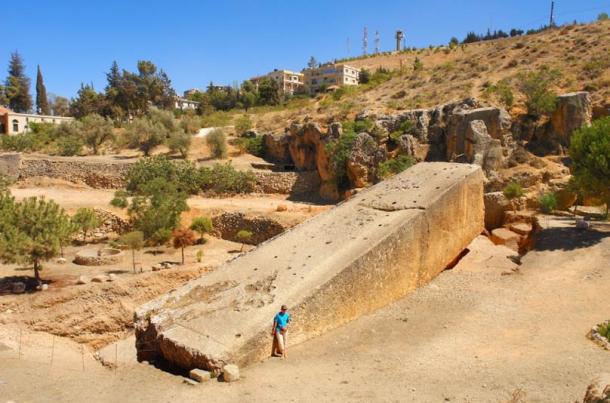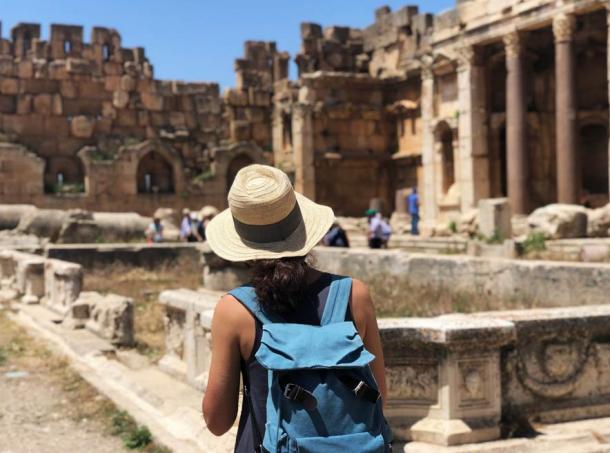Baalbek in Lebanon has been known by many names, ruled by many different kings and emperors, and has been under the dominion of many faiths in its long and storied history. Some 2,000 years ago, around 27 BC, when it was known as Heliopolis or “The City of the Sun”, Baalbek served as the premier outpost of the Roman Empire . Today, it is a UNESCO World Heritage Site .
To allow history lovers and pandemic-frustrated travelers the chance to relive the rich and eventful past of the city, and enjoy the grandeur of the Roman temples in the Beq’aa Valley, the Lebanese Directorate of General Antiquities and the German Archaeological Institute (DAI) have come together with the American virtual tour company Flyover Zone, to create an online immersive experience titled “ Baalbek Reborn: Temples ”, as reported by Abu-Dhabi based The National .

“Baalbek Reborn: Temples” uses advanced digital technology and 3D image modelling, based on archaeological expertise and excavations to create the animated virtual tour of Baalbek. ( Flyover Zone Productions / German Archaeological Institute )
Tour Through the Roman Glory of Baalbek
However, the temples at Baalbek are not just for history aficionados and cultural tsars, but for anyone with a remote interest in arts and aesthetics. Thanks (but no thanks) to the Covid-19 pandemic, this virtual tour app allows anyone in the world with an internet connection to view the splendor of Baalbek by moving through the ruins as they look today and as they looked at the time of its glorious peak in 215 AD, when it was the sanctuary of ancient Rome.
The app took a full two years to complete and was launched earlier this month. When speaking about the new app and the importance of Baalbek, Flyover Zone founder Bernard Fischer is quoted in The National as saying:
No list of the world’s most important tourist destinations would be complete without Baalbek, so you can well understand why we jumped at the opportunity to recreate Baalbek in the Roman period. It was the site of one of the most important oracles of the ancient world, dedicated to Heliopolitan Zeus (later know as Jupiter), and it became seriously influential… Emperors consulted it. Everyone wanted to know whether they should get married, take a trip or start a business, start a war, and they all asked the oracle.
The virtual tour of Baalbek allows users to see areas that are physically cordoned off for visitors, as well as parts of the site, including the temple, that are now in ruins or were destroyed with the passing of time. The Temples of Jupiter, Bacchus, Venus and the Muses have been captured in 8K resolution 360-degree panoramas and shot with drones. The ruins have been recreated thanks to advanced digital technology using sophisticated 3D digital image modelling and reconstruction.
The whole Baalbek experience and ancient architecture is brought to life with this new virtual reconstruction. There are 38 stops, as well as two hours of commentary from archaeology and architecture experts, available in Arabic, French, English and German. Users are able to choose their own path into the virtual site of Baalbek, or follow the 40-minute guided virtual tour. The best part is that, thanks to the philanthropic zeal of retired Kuwaiti banker and archaeology enthusiast, Bassam Alghanim, the entire app experience and virtual tour of Baalbek is completely free.

The Stone of the Pregnant Woman, one of the giant monoliths discovered in Baalbek, Lebanon, known as Heliopolis in Roman times. ( robnaw / Adobe Stock)
Baalbek Heliopolis: Historical Marvel and Architectural Wonder
Baalbek is located in Be’qaa Valley of Lebanon and was once a Phoenician city, known as Heliopolis during the Hellenistic period. Over a span of 200 years, it became the site of some of the most impressive and complex temples ever built by the Romans, including the gargantuan temple of Jupiter, with its 54 massive columns (22 meters, or 72 feet, in height!) and 128 smaller ones dotting its perimeter. Today, only six of these 54 columns remain, with diameters of more than 2 meters (6.56 ft). To archaeologists, even today, the size of this temple remains a mystery.
In fact, archaeologists have discovered several different layers of ruin at this site – Phoenician, Roman, Ummayad, Crusaders and others. The proximity to the two rivers that form the Be’qaa Valley, is probably the reason for why this became a sort of cradle of civilization – indeed, the worshipping of life and fertility was carried out here. The “Baal” is an ode to the worship of the Semitic “God of the Gods”, who predated Helios, Zeus and Jupiter.
Baalbek is known for the massive stone blocks used in its construction, which have fascinated researchers for many years. As recently as 2014, a team of German and Lebanese archaeologists uncovered the largest man-made block of stone ever discovered, weighing a whopping 1,650 tons (1496 metric tonnes), at the Baalbek temple site. Other similarly gargantuan megaliths were also found nearby, probably intended for the Temple of Jupiter, but never really utilized because of their massive sizes.

This virtual tour of Baalbek is part of a wider strategy to encourage tourism to Lebanon. ( Oleksandr / Adobe Stock)
Lebanon: An Emerging Tourist Destination
The purpose of the virtual tour is to complement physical tourism, instead of replacing it. A few delays occurred due to the catastrophic blast in Beirut in August 2020, while the history of Lebanon has been fraught with civil war and strife. With things quietening down now, it opens up a plethora of possibilities for curious people, historians, students and travelers. Lebanon is like a dormant volcano, in historical terms, and the time has come for it to erupt and be explored. According to Aljazeera, “Baalbek Reborn: Temples is intended to raise awareness around the world of this unique world heritage site and encourage more tourism to Lebanon in general.”
The Baalbek Reborn virtual tour , at the height of the Covid-19 pandemic, seems like the right place to start. Henning Burwitz, an architect and archaeologist at the DAI, who worked on the site for more than a decade, sums it up perfectly in saying: “We’re excited to share our results to a much wider audience, inviting everyone to see Baalbek and what it used to look like. If you think Rome was great, you have yet to see Baalbek!” Frankly, nothing seems like a better advertisement than that.
Top image: Jupiter’s temple at Baalbek in Lebanon. Source: Anna Om / Adobe Stock
 RSS Feed
RSS Feed















 April 12th, 2021
April 12th, 2021  Awake Goy
Awake Goy  Posted in
Posted in  Tags:
Tags: 













